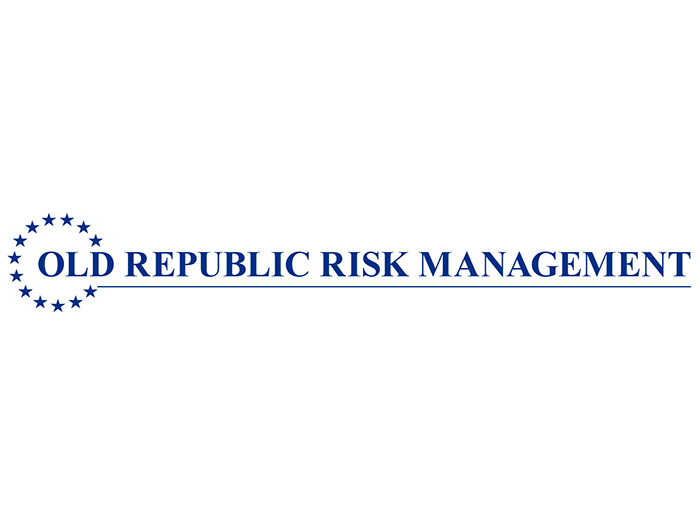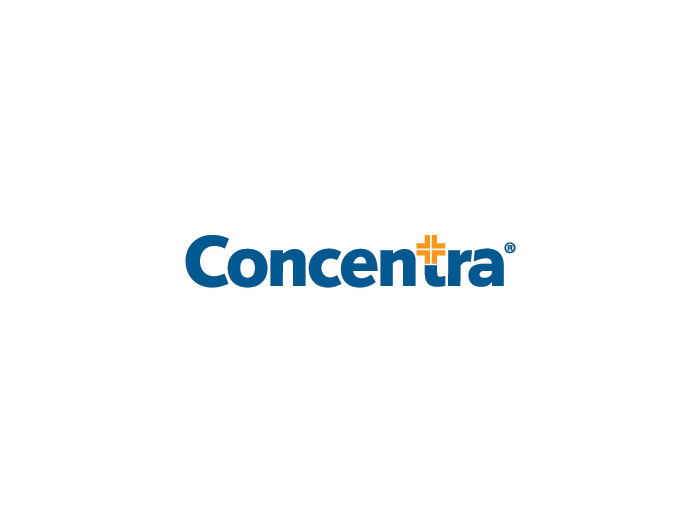2017 Vermont Report
A Perfect Fit
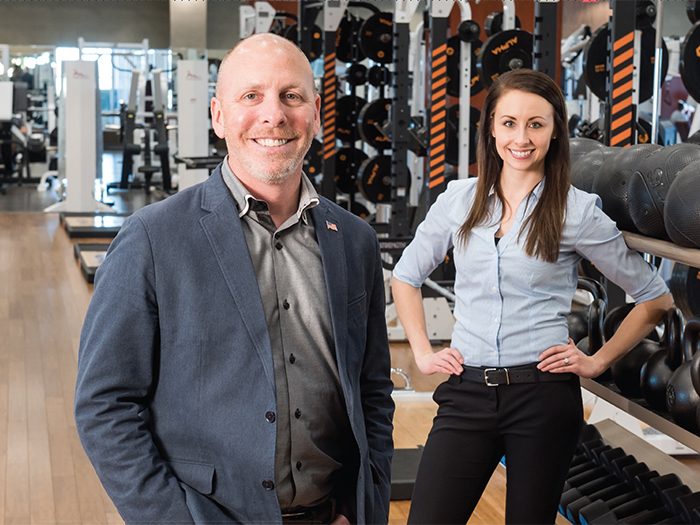
Vermont, known for its natural landscape and ski resorts, is also the domicile for a new captive insurance company for Life Time Fitness, Inc., a privately held, multi-billion-dollar healthy living, healthy aging and healthy entertainment lifestyle company based in Chanhassen, Minn.
“Life Time is a 25-year-old Healthy Way of Life company committed to helping communities organizations and individuals achieve their total health objectives, fitness goals and athletic aspirations by providing the best places, best performers and best programs that positively change lives every day.
“Beginning with our first club in 1992, we have grown to more than 120 destinations in 35 major markets across 26 states and Canada, serving more than 1.8 million members,” said Josh Reding, Life Time director of risk management.
“In keeping with our growth, our financial protection and insurance needs have also evolved. With this in mind, we licensed our captive in January of 2017 and funded it in February.”
Life Time’s comprehensive, multi-purpose, resort-like destinations provide entertaining, educational, friendly, functional and innovative experiences that meet the health and fitness needs of the entire family, according to the company.
Over the last 25 years, the company has transformed the health and fitness space, while creating an entirely new industry — Healthy Way of Life. Today, Life Time is poised to further extend its brand and growth with the creation of dozens of new, iconic Life Time destinations, complete with comprehensive Healthy Living, Healthy Aging and Healthy Entertainment programs, services and products, it said.
“Like so many captive programs, the insurance coverage that Life Time Captive Insurance Co. provides to its parent organization is plain vanilla, but the parent is unique,” said David Provost, deputy commissioner of captive insurance, Vermont’s top regulator.
“It was a great fit for Life Time Fitness to form their captive in Vermont — not just because the captive program was right up our alley, but because we have a fitness culture here too,” — David Provost, deputy commissioner of captive insurance, State of Vermont
“It was a great fit for Life Time Fitness to form their captive in Vermont — not just because the captive program was right up our alley, but because we have a fitness culture here too,” he said.
“Vermont ranks as the second-fittest state in the nation, and the Department of Financial Regulation staff exemplifies that ethos. We have bikers, skiers, kayakers, hikers, climbers, marathoners and more on staff, and may be the only insurance department in the country that has put up teams for challenge runs, obstacle races and Penguin Plunges.”
Create a Short List
Given its characteristics, third-party liability, property and casualty are major portions of Life Time’s insurance program.
So is getting educated about risk.
James Swanke, director of risk consulting at Willis Towers Watson, said risk managers should attend RIMS or CICA conferences as well as “talk to the regulators from various domiciles as a first step to learn as much as they can and determine which they like better in terms of captive legislation, regulation and infrastructure.”
“The goal should be to create a short list of attractive captive domiciles. We can certainly provide our point of view as consultants, but it has to be a comfortable fit for the client.”
After research, it’s time for a formal captive feasibility study including actuarial projections, financial analyses and cost-benefit comparisons. In Life Time’s case, company officials admitted to feeling as if they were being overly cautious in the years it took to collect information about various domiciles and put their internal processes in place. But Swanke said the firm took the right amount of time to prepare.
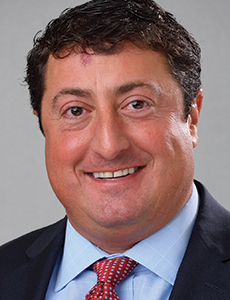
Dan Towle, former director of financial services, State of Vermont
“There are more choices than ever when it comes to domicile selection and competition can be fierce,” said Dan Towle, outgoing director of financial services for the State of Vermont.
“The bottom line is that companies want to form their captives in a predictable, stable, efficient and business-friendly environment. Other jurisdictions can copy our laws, but having our experience, knowledge, infrastructure and a 36-year track record is not easily duplicated.”
That is attractive to first-time captives.
“I joined Life Time six years ago and report to our executive vice president and chief administration officer, who is knowledgeable in risk financing and has always had an appreciation for risk management,” said Reding.
“We have been evaluating the idea of a captive since 2011 and knew it needed to be a long-term program with a solid plan to transfer risk outside of the traditional markets, especially workers’ compensation and third-party liability.
“The hiring of our Risk & Safety Manager Ashley Fitzner in 2013, was a final piece to our plan for captive preparation. She has brought the needed consistency to our risk reduction programs across all of our destinations in preparation of the captive launch.”
Life Time primarily considered Vermont, Bermuda, and the Cayman Islands for domiciles, but also considered Washington D.C., Arizona (one of the many areas that Life Time has a high concentration of destinations), and even Hawaii.
The decision was narrowed down to Vermont and Cayman, and Life Time selected the leading onshore captive insurance domicile, “because of its reputation in the captive insurance industry for expertise, consistency and a solid infrastructure,”Reding said.
Growth Strategy
While many firms establish captives mainly to gain leverage in the commercial market, Life Time has more ambitious plans.
“What’s important to us is providing our members with unparalleled experiences and value so that they choose to remain at Life Time for the long term,” Reding said.
“Unlike most typical fitness facilities that merely offer roomfuls of equipment without programs and essentially, are non-use models, we always have embraced the concept of Member Point of View (MPV), by building and operating destinations our members want to be in versus places they feel they have to be. We have considered many enhancements beyond our current offerings, and continue looking at the captive as a potential tool to provide additional benefits to members someday.”
“We are being selective about which risks we’re transferring into the captive. We have embraced a crawl-walk-run approach; but the captive will allow us to accelerate our objectives by utilizing our resources to invest in ourselves.” — Josh Reding, Life Time director of risk management.
This is not to say that Life Time is not seeking financial benefits from the captive formation in the near term. “Our first premium was not significantly different from that which we paid in the commercial market,” said Reding. “One of the objectives is to turn reduced premiums and losses into a surplus.
“We are being selective about which risks we’re transferring into the captive. We have embraced a crawl-walk-run approach; but the captive will allow us to accelerate our objectives by utilizing our resources to invest in ourselves.”
The captive will approach the reinsurance market for the first time this fall. As Life Time continues to enhance its safety program, Reding and Fitzner plan for a portion of future funds to support loss prevention needs.
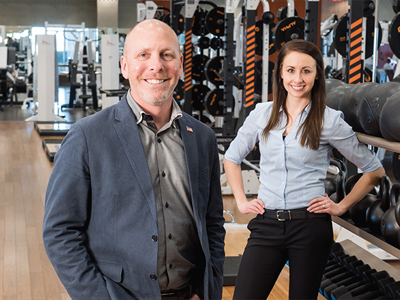
Josh Reding, director of risk management and Ashley Fitzner, risk & safety manager
Reding said his company selected Vermont “knowing the flexibility of the regulatory framework as an onshore domicile — and by that I don’t mean lax. The onshore domicile allows us to achieve our long-term objectives without as many regulatory roadblocks as an offshore domicile.
“The staff at the Vermont Captive Insurance Division was patient and persistent while we completed our study, and they moved quickly when we were ready to complete the formation of the captive.”
Swanke said that for the most part, “captive domicile laws are comparable state to state but there can be some important differences.” Meeting with potential finalists is important, he said.
“Captive regulators hear about the client’s business plan and vision, and the client hears the regulator’s views on the domicile’s captive law, infrastructure and so forth. There has to be a meeting of the minds, so it is important to sit down together.
“In most cases one domicile stands out as a clear winner after all the visits.”
Swanke said he was not surprised that Life Time chose Vermont. “Vermont is among the oldest and largest captive domiciles. They have significant infrastructure dating back to July 1981. New states will enter the scene as captive domiciles with their bells and whistles, and those often attract local companies that want to do business in state or close to home. There is a lot of competition among domiciles.”
One trend in captives, he added, is captive owners moving non-traditional risks into their captives beyond the standard risks of general liability, auto, workers’ compensation and property.
“We are seeing a lot of interest in cyber, also wage-and-hour, which is related to employment practices liability,” Swanke said. “Certain domiciles will be more comfortable with these newly emerging risks, which will foster further competition across the domiciles.”
While Life Time does not yet operate one of its healthy-way-of life destinations in Vermont, it appreciates the healthy lifestyle living the Green Mountain State provides, and is excited to partner with their captive offerings in the years ahead. &
_____________________________________________________________
2017 Vermont Report
An agricultural consortium is one group taking a serious look at forming an agency captive in Vermont.
Risk & Insurance® speaks with Dan Towle as he departs from his long tenure as director of financial services for the State of Vermont.

 Vermont Eyes Agency Captive
Vermont Eyes Agency Captive Eight Questions for Dan Towle
Eight Questions for Dan Towle 



